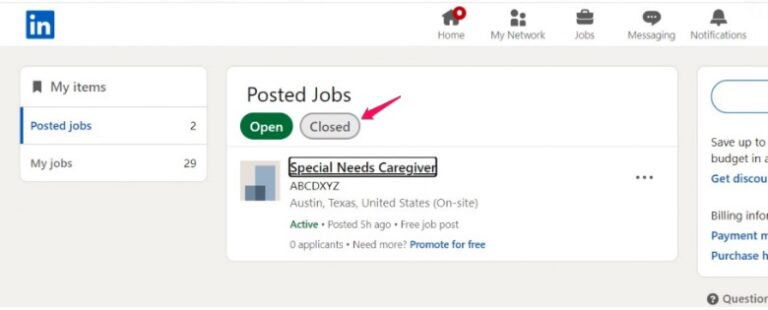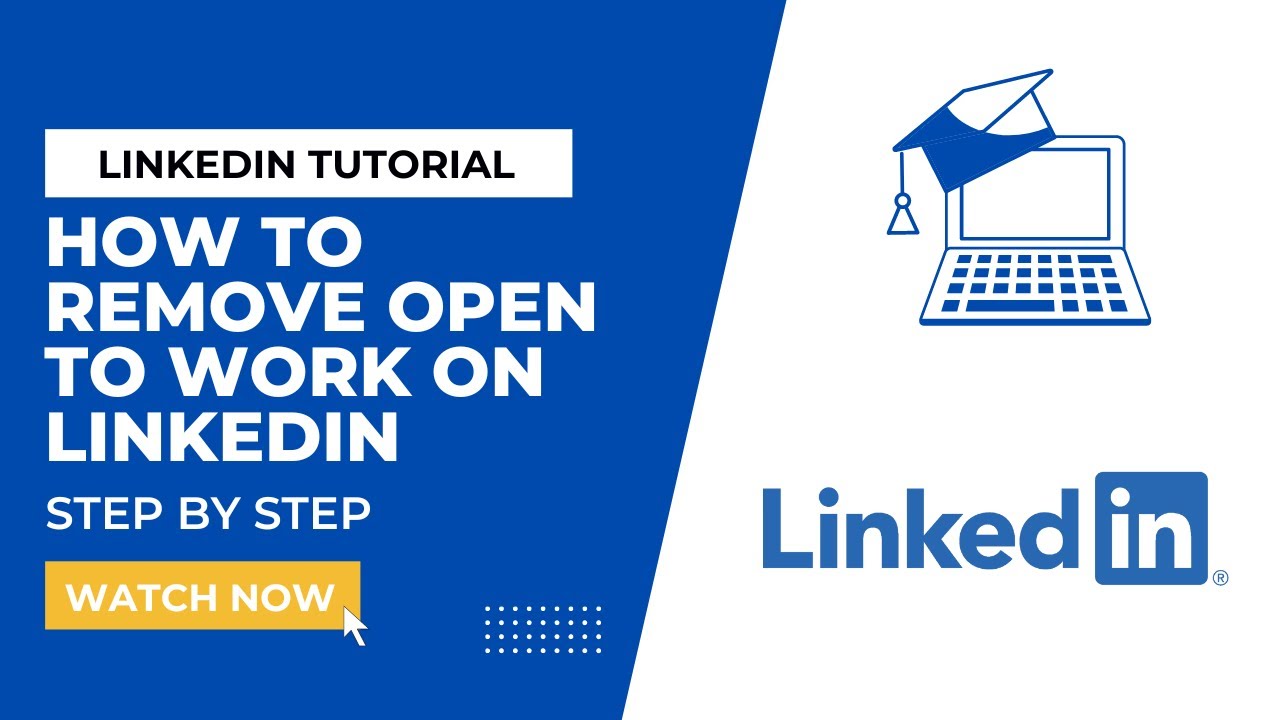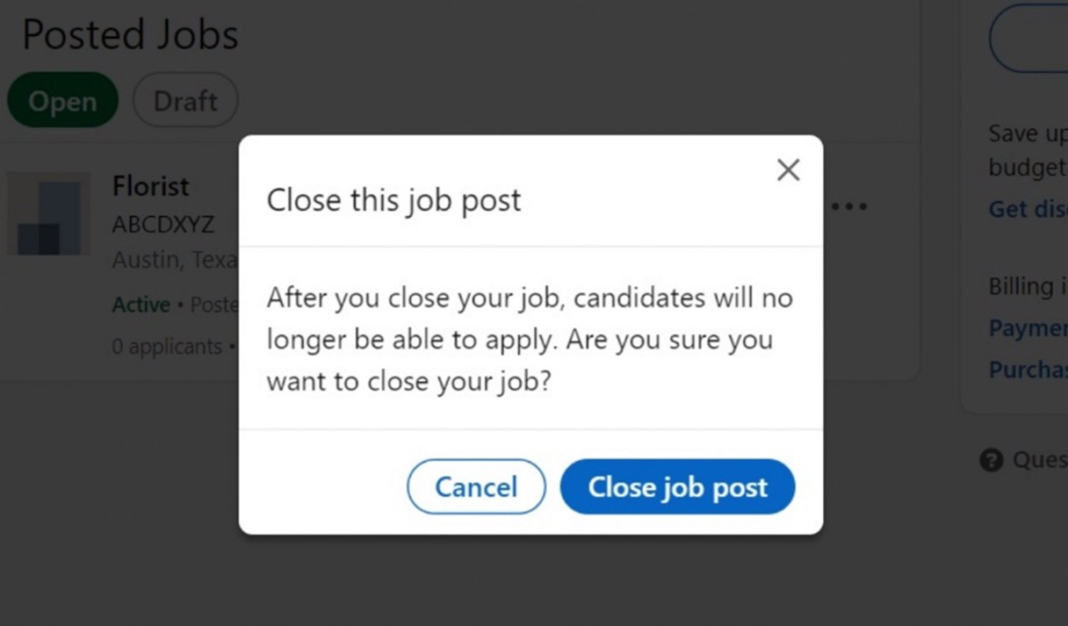We've all been there—hitting that "Apply" button on LinkedIn only to later realize that the job isn't quite the right fit. If you're feeling the need to hit the brakes on your application, withdrawing it is just a few clicks away. In this guide, we'll walk you through the process of withdrawing your job application on LinkedIn, and we'll explore some reasons you might consider doing so.
Why You Might Want to Withdraw Your Job Application

Withdrawing your job application can feel a bit daunting, especially if you’re worried about how it might reflect on your professional image. However, there are plenty of valid reasons why you might consider this action. Here’s a breakdown of some common scenarios:
- Found a Better Opportunity: Life is full of surprises, and sometimes a job that fits better with your skills, goals, or values pops up after you’ve applied elsewhere. It’s perfectly fine to prioritize what’s best for your career.
- Changed Your Mind: After applying, you may have done more research on the company or role, only to realize it doesn’t resonate with your career aspirations. Trust your instincts; if it doesn’t feel right, it’s okay to withdraw.
- Personal Circumstances: Life can throw curveballs—family obligations, health issues, or unexpected relocations can all impact your job search. If your situation has changed, it’s important to put your well-being first.
- Accepting Another Job Offer: Congratulations! If you’ve landed another offer that excites you, it’s courteous to withdraw your application from other roles to allow the company to focus on other candidates.
- Concerns About Company Culture: Upon further reflection or feedback from current employees, you might realize that the company culture isn’t a fit for you. This realization is valid and can save you time and frustration in the long run.
All of these reasons highlight that it’s absolutely normal to change your mind during the job application process. Remember, your career is a journey, and it’s all about making the choices that are right for you. Withdrawing your application can be a strategic decision in managing your career path effectively.
In the following sections, we’ll delve into the specific steps you need to take to withdraw your application on LinkedIn, ensuring you navigate this process smoothly and professionally!
Also Read This: How to Format Text in LinkedIn Post
3. How to Access Your LinkedIn Job Applications

If you've decided to withdraw your job application, the first step is to locate it on LinkedIn. Here's how you can seamlessly access your applications:
- Log In: Start by logging into your LinkedIn account. If you’ve forgotten your password, there’s no shame in hitting that ‘Forgot Password?’ link.
- Navigate to Your Profile: Click on your profile picture or the “Me” icon at the top of the LinkedIn homepage. This will direct you to your profile.
- Find the Jobs Section: Look for the “Jobs” tab in the top menu. Click on it, and you’ll be taken to a new page dedicated to job-related activities.
- Access Your Applied Jobs: On the left sidebar, you should see a section titled “Manage Job Applications.” Click on it to view all the positions you’ve applied for.
- Review Your Applications: Here, you’ll find a list of all the jobs you've applied to recently, along with their respective statuses. This is where you can keep track of every application!
Remember, navigating through LinkedIn is generally straightforward, but if you're having trouble, a little bit of patience can go a long way. Once you've found your applications, you're just a few steps away from officially withdrawing one.
Also Read This: Should You Connect With Your Interviewer on LinkedIn?
4. Steps to Withdraw Your Job Application

Now that you’ve accessed your job applications, let’s jump into the steps to withdraw your application. Withdrawing your application is quick and easy, and here's how to do it:
- Select the Job: Find the job you wish to withdraw your application from. Click on the job title to open the job details.
- Locate Withdraw Option: Look for the “Withdraw Application” button. This is usually located at the top-right corner of the job details page.
- Click Withdraw: Once you click the “Withdraw Application” button, a confirmation window will pop up. This is your moment to reconsider if you want to proceed with the withdrawal.
- Confirm Your Decision: If you’re sure about your choice, click on the “Confirm” button in the pop-up. This action will officially withdraw your application from consideration.
- Check Your Status: After confirming, make sure to check back in the “Manage Job Applications” section. You should see that the status of your application has changed to “Withdrawn.”
And there you have it! Withdrawing your job application on LinkedIn is a quick process, ensuring you can easily manage your job search without any hassle. It's a normal part of the job hunting journey, so don't feel bad if you need to take a step back from any applications. Sometimes, the best decision is to refocus your search on opportunities that are a better fit.
Also Read This: What to Say When Reposting on LinkedIn: Best Practices for Engagement
5. What to Do After Withdrawing Your Application
So, you’ve made the decision to withdraw your job application on LinkedIn. It’s a big step, but it’s essential for ensuring that you’re only pursuing opportunities that feel right for you. Now, the question is—what’s next?
Here are some important steps to take after you have withdrawn your application:
- Reflect on Your Decision: Take some time to think about why you withdrew your application. Was it the company culture? The job role? Understanding your reasons can help guide your future applications.
- Connect with the Employer: If you feel comfortable, consider reaching out to the hiring manager or recruiter. A quick message expressing appreciation for their time and letting them know you've decided to withdraw can leave a good impression.
- Update Your Profile: Ensure that your LinkedIn profile is current. If you withdrew due to realizing the role wasn’t the perfect fit, you might want to tweak your profile to better showcase your skills and experiences relevant to your next target jobs.
- Network Strategically: Now that you have freed up your time and mental space, it’s a great opportunity to connect with new contacts. Engage in networking activities, join relevant groups, and attend events—this can lead to new opportunities that align better with your career path.
- Prepare for Future Applications: Use this time to refine your resume, practice interview skills, and research potential jobs. Additionally, consider tailoring your applications to be more in line with the companies and roles that genuinely interest you.
Remember, withdrawing an application is not a setback. It’s a chance to reassess and redirect your job search in a more meaningful direction!
Also Read This: How Much Does LinkedIn Learning Cost for an Organization
6. Tips for Future Job Applications on LinkedIn
Now that you’ve got a handle on withdrawing your application, it’s time to turn your attention to the future! When you’re ready to dive back into the job market, consider these tips for submitting your applications on LinkedIn:
- Be Selective: Instead of applying to every job you see, take the time to target positions that genuinely match your skills and interests. Quality over quantity is key here!
- Customize Your Applications: Tailor your resume and cover letter for each job you apply to. Highlight specific experiences and skills that align with the job description. This extra effort can make a significant impact!
- Leverage Your Network: Before applying, check to see if you have any connections at the company. Reach out to them for insights into the company culture and tips for your application. A referral can go a long way!
- Stay Active on LinkedIn: Continuously engage with content, share your own insights, and connect with industry professionals. This not only enhances your visibility but also shows recruiters you’re an active participant in your field.
- Prepare Thoroughly for Interviews: Once you land an interview, do your homework. Research the company, understand its mission, and be ready to discuss how you can contribute specifically to their goals.
By keeping these tips in mind, you can enhance your job application strategy on LinkedIn and improve your chances of landing the perfect role. Good luck out there—you've got this!
Conclusion
Withdrawing your job application on LinkedIn is a straightforward process that can be completed in just a few steps. It's essential to approach this action with professionalism, as it reflects on your overall candidacy and reputation in the job market. Remember these key points:
- Check Application Status: Before initiating the withdrawal, ensure you are aware of where you stand in the application process.
- Communicate Clearly: If you have already had communications with the employer, consider sending a brief message to inform them of your decision.
- Keep Your Profile Updated: After withdrawing, continue to engage with your LinkedIn network and keep your profile aligned with your current career interests.
In the realm of job searching, maintaining control over your applications is crucial. Withdrawing an application can help redirect your efforts to opportunities more aligned with your career goals. By handling the process thoughtfully, you can leave a positive impression, potentially allowing for re-engagement in the future. Ultimately, the most important step is to ensure that your job search reflects your aspirations and priorities. Good luck!
 admin
admin








